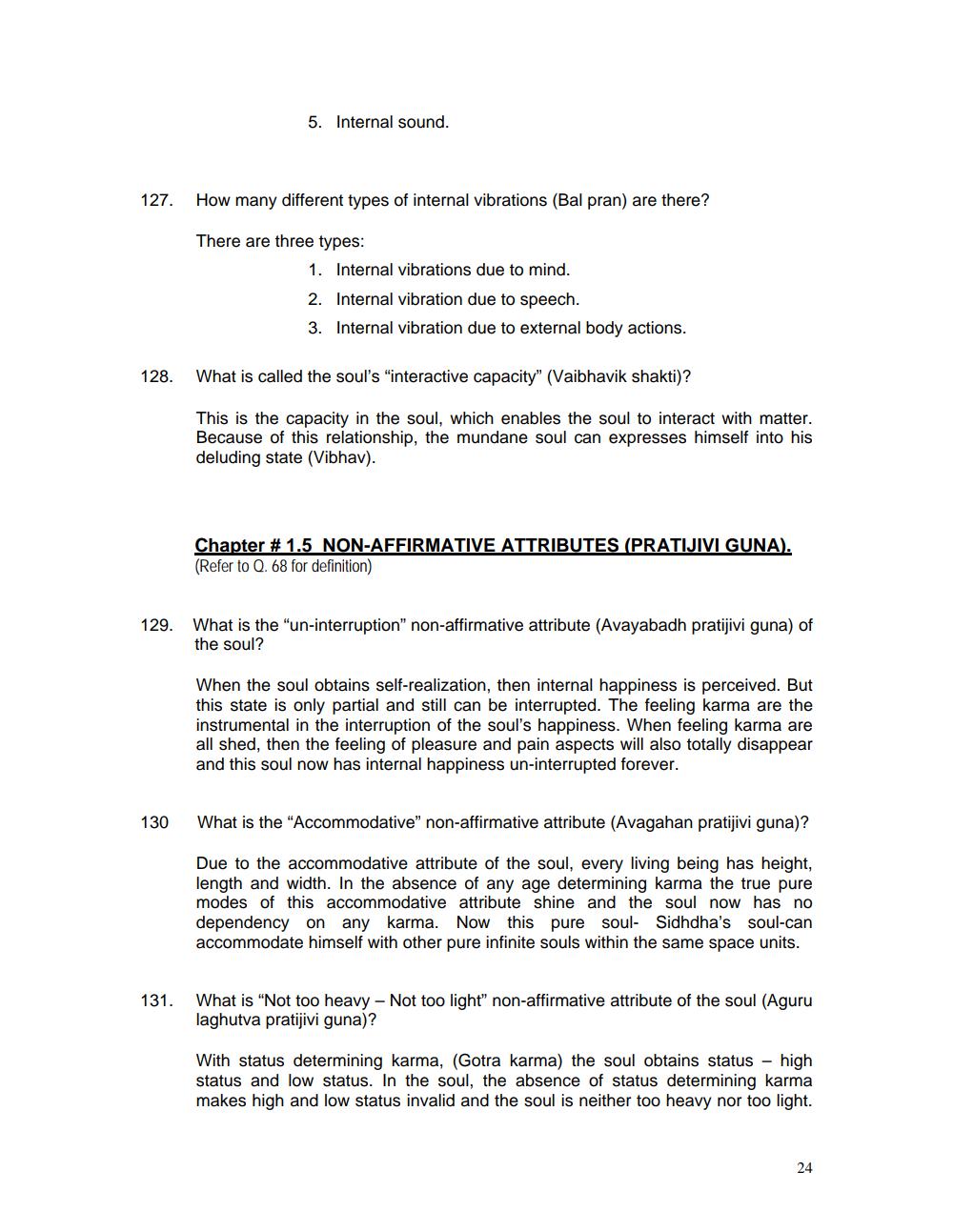________________
5. Internal sound.
127. How many different types of internal vibrations (Bal pran) are there?
There are three types:
1. Internal vibrations due to mind. 2. Internal vibration due to speech. 3. Internal vibration due to external body actions.
128.
What is called the soul's "interactive capacity" (Vaibhavik shakti)?
This is the capacity in the soul, which enables the soul to interact with matter. Because of this relationship, the mundane soul can expresses himself into his deluding state (Vibhav).
Chapter # 1.5 NON-AFFIRMATIVE ATTRIBUTES (PRATIJIVI GUNA). (Refer to Q. 68 for definition)
129. What is the "un-interruption" non-affirmative attribute (Avayabadh pratijivi guna) of
the soul?
When the soul obtains self-realization, then internal happiness is perceived. But this state is only partial and still can be interrupted. The feeling karma are the instrumental in the interruption of the soul's happiness. When feeling karma are all shed, then the feeling of pleasure and pain aspects will also totally disappear and this soul now has internal happiness un-interrupted forever.
130
What is the "Accommodative" non-affirmative attribute (Avagahan pratijivi guna)?
Due to the accommodative attribute of the soul, every living being has height, length and width. In the absence of any age determining karma the true pure modes of this accommodative attribute shine and the soul now has no dependency on any karma. Now this pure soul- Sidhdha's soul-can accommodate himself with other pure infinite souls within the same space units.
131. What is "Not too heavy - Not too light” non-affirmative attribute of the soul (Aguru
laghutva pratijivi guna)?
With status determining karma, (Gotra karma) the soul obtains status - high status and low status. In the soul, the absence of status determining karma makes high and low status invalid and the soul is neither too heavy nor too light.




